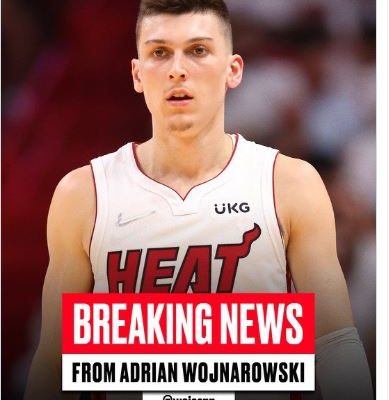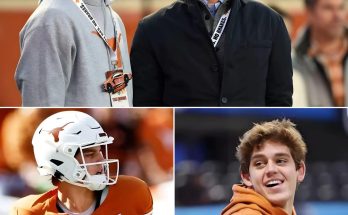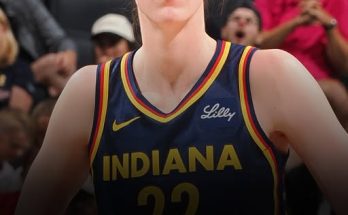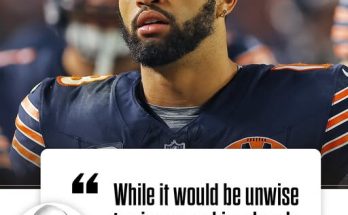Under the current CBA, each NBA team is now permitted to carry up to three players on two-way contracts, in addition to their standard 15-man roster. This effectively creates an 18-player pool, allowing teams greater depth, particularly when navigating the inevitable landscape of injuries or inconsistent performances from main roster players. The “two-way” moniker precisely defines the nature of the compensation and playing time: these players earn a pro-rated portion of the NBA rookie minimum salary when they are with the NBA team, and a lower, albeit still significant and guaranteed, G-League salary when they are with the affiliate. For the 2025-26 season, for instance, a two-way contract pays roughly half the value of a rookie minimum salary, which is projected at around $636,435, with guaranteed amounts ranging from $85,300 to up to half of the base compensation if the player is not waived by the first day of the regular season. This financial structure provides a crucial incentive for players, offering substantially more stability and income than a traditional G-League contract, while still being a cost-effective solution for NBA teams looking to develop assets without fully committing to a guaranteed roster spot or a higher salary cap hit.
A key operational aspect of the two-way contract lies in the limitations placed on a player’s time with the NBA team during the regular season. As per the current rules, two-way players are typically limited to 50 active games on the NBA team’s roster, excluding G-League showcase games. This restriction ensures that the primary function of the two-way contract remains player development within the G-League, preventing teams from essentially using these spots as full-time, discounted NBA roster positions. Should a team decide that a two-way player has developed sufficiently and is ready for a more permanent role, or if their services are required beyond the 50-game limit, the contract must be converted to a standard NBA deal. This conversion, which typically occurs mid-season, then places the player on the 15-man roster and usually entails a fully guaranteed salary for the remainder of that season, and potentially future seasons, depending on the terms. This mechanism provides a clear pathway for upward mobility, acting as a direct incentive for players to perform and for teams to invest in their growth. Furthermore, players on two-way contracts are not eligible to participate in the NBA Playoffs unless their contract is converted to a standard NBA deal before the playoff roster deadline, underscoring their developmental status.
Perhaps one of the most significant advantages for teams utilizing two-way contracts is the operational flexibility they provide. Players on these contracts can be moved seamlessly between the NBA team and its G-League affiliate without having to clear waivers. This eliminates the risk of losing a developing asset to another team, which is a common concern with traditional G-League assignments or roster cuts. For a team like the Miami Heat, renowned for its meticulous attention to detail and long-term planning, this flexibility is invaluable. It allows them to cycle players through different environments, expose them to varying levels of competition, and ensure they are receiving targeted development tailored to their specific needs, all while maintaining control over their contractual rights. Eligibility for two-way contracts is generally restricted to players with three or fewer years of NBA service, reinforcing the system’s intent as a developmental tool for younger prospects rather than a loophole for veteran players. This ensures the focus remains on nurturing future talent, offering a genuine opportunity for promising players who might otherwise struggle to find a foothold in the league.
This brings us to the stage where players like Myron Gardner, the Summer League standout, truly shine: the NBA Summer League. What was once a relatively low-stakes showcase for recently drafted rookies and a smattering of unsigned veterans has evolved into a highly competitive, intensely scrutinized proving ground. Las Vegas, in particular, becomes the epicenter of the basketball world for a few weeks in July, as all 30 NBA teams converge to evaluate talent under the bright lights of competitive, albeit exhibition, games. For undrafted players, and those like Gardner who might have had prior G-League experience but are still fighting for an NBA opportunity, Summer League is often their biggest, and sometimes last, chance to make a lasting impression on NBA decision-makers.
The objectives of NBA teams at Summer League are manifold. For general managers and scouting departments, it is an invaluable opportunity to see their recent draft picks in live-game scenarios, assessing how their skills translate against professional competition. Beyond the drafted talent, however, lies the real treasure hunt: identifying undrafted free agents who possess untapped potential or a particular skillset that complements the team’s needs. Many success stories of the modern NBA, from established veterans like Fred VanVleet and Duncan Robinson to valuable role players, have originated from strong Summer League performances by undrafted players. Coaches, too, utilize Summer League as a laboratory, experimenting with new offensive sets, defensive schemes, and different player combinations, laying the groundwork for the upcoming regular season. It also serves as an initial bonding experience, allowing players to begin to understand the team’s culture, expectations, and coaching philosophies.
For a player like Myron Gardner, Summer League is a high-pressure audition. Every rebound contested, every shot taken, every defensive rotation, and every pass is meticulously evaluated. Scouts, analytics departments, and coaching staff pour over game film and advanced metrics, looking for signals that indicate NBA readiness or significant developmental upside. A strong showing, characterized by efficiency, versatility, and an understanding of team concepts, can lead directly to a training camp invite, an Exhibit 10 contract (a non-guaranteed deal that can be converted into a two-way contract, often with a G-League bonus if the player joins the affiliate), or, as in Gardner’s case, a coveted two-way contract. Gardner’s reported performance, showcasing a well-rounded game with impressive averages in scoring, rebounding, playmaking, and defensive activity, coupled with efficient shooting percentages, particularly from beyond the arc and the free-throw line, clearly resonated with the Heat’s analytical and scouting teams. His ability to hit the three-pointer, a premium skill in today’s pace-and-space NBA, combined with his defensive versatility, makes him an intriguing prospect for a Heat system that values two-way players.
This brings us to the unique organizational identity of the Miami Heat, often distilled into two words: “Heat Culture.” Under the steadfast leadership of President Pat Riley and Head Coach Erik Spoelstra, the Heat have forged a reputation as an organization that doesn’t just draft and acquire stars; they make stars. They possess an almost unparalleled ability to identify undervalued talent, often undrafted or overlooked by other teams, and then meticulously develop those players into integral parts of a championship-contending roster. “Heat Culture” is more than just a marketing slogan; it is a rigorous, demanding, and all-encompassing philosophy that permeates every level of the organization. Its core tenets include:
Firstly, an unyielding work ethic. From the moment a player steps into the Heat facility, they are exposed to a culture of relentless effort, dedication, and a commitment to self-improvement. There are no shortcuts, no days off, and no excuses. Players are expected to push their physical and mental limits daily. Secondly, grit and resilience. The Heat demand a mental toughness that allows players to thrive under pressure, bounce back from setbacks, and embrace challenges. They seek players who are not afraid of hard work and who possess an inherent competitive fire. Thirdly, accountability. Every player, from the biggest star to the latest two-way signee, is held accountable for their performance, their preparation, and their adherence to team principles. This fosters an environment of trust and collective responsibility. Fourthly, versatility and adaptability. In a fluid, positionless NBA, the Heat prioritize players who can guard multiple positions, contribute in various offensive schemes, and adapt their game to suit the needs of the team. This is evident in their preference for players who can shoot, defend, and possess a high basketball IQ. Fifthly, and perhaps most crucially, a fundamental commitment to high-level defense. Defense is the bedrock of the Heat’s identity, and every player, regardless of their offensive prowess, is expected to buy into and excel in the team’s aggressive, disciplined defensive schemes. Finally, a team-first mentality. Individual statistics and glory are always secondary to the collective success of the team. Players are expected to embrace their roles, make sacrifices, and play for the greater good.
The Heat’s history is replete with examples of players who have not only survived but thrived within this demanding system. Udonis Haslem, an undrafted South Florida native, became a franchise icon and a cornerstone of multiple championship teams, epitomizing the Heat’s emphasis on grit and selflessness. Duncan Robinson transformed from an undrafted Division III transfer into one of the league’s elite three-point shooters, a testament to his tireless work ethic and the Heat’s ability to refine a niche skill. Max Strus and Gabe Vincent, both undrafted, evolved into crucial starters and key contributors during deep playoff runs, showcasing their versatility and defensive improvements under the Heat’s tutelage. Even high draft picks like Bam Adebayo and Tyler Herro have seen their games elevate significantly through the Heat’s rigorous developmental program, becoming All-Stars and high-level offensive threats respectively, while also embodying the defensive principles of the team. For Myron Gardner, signing with the Heat on a two-way deal means entering this crucible. He will be expected to fully immerse himself in “Heat Culture,” embracing its demands as an opportunity for unparalleled growth.
His journey will predominantly unfold with the Heat’s G-League affiliate, the Sioux Falls Skyforce. The Skyforce operate as a seamless extension of the Heat organization, implementing the same offensive and defensive schemes, utilizing identical terminology, and adhering to the same strength and conditioning philosophies. This integrated approach ensures that when a player like Gardner is called up to the main roster, the transition is as smooth as possible, minimizing the learning curve and allowing them to contribute immediately. In Sioux Falls, Gardner will receive personalized coaching, extensive film study, and ample game repetitions against professional competition, allowing him to hone his skills, address weaknesses, and consistently apply the lessons learned in practice. The G-League is no longer just a place for players to linger; it is a sophisticated development laboratory where specific skills are refined, mental toughness is forged, and professional habits are ingrained. The consistent flow of players between the Heat and the Skyforce—whether it’s rookies gaining experience, veterans shaking off rust from injuries, or two-way players logging crucial minutes—underscores the critical nature of this affiliation.
The signing of Myron Gardner, therefore, is not merely about acquiring a player for the present; it’s a calculated investment in the future. With the addition of Gardner and Vladislav Goldin, another intriguing Summer League prospect, to two-way deals, the Heat are strategically filling these valuable roster slots, demonstrating their unwavering commitment to cultivating young talent from within. Gardner’s reported skillset, particularly his defensive prowess and improved shooting, aligns perfectly with the Heat’s strategic vision. In an NBA increasingly dominated by multi-positional players who can contribute on both ends of the floor, Gardner’s versatile profile makes him an attractive long-term prospect. While it is unlikely he will be an immediate, consistent rotation player for the main Heat roster in the upcoming season, his presence significantly deepens the team’s talent pool. He provides essential depth, offering a readily available option should injuries strike or if a main roster player struggles. Furthermore, his participation in training camp will foster healthy competition, pushing other players to elevate their game and ensuring the entire roster remains sharp.
For Myron Gardner himself, the two-way contract marks a significant milestone in his professional basketball journey, but it is by no means the destination. It is, rather, a vital stepping stone, an invitation to prove his NBA worth. The path ahead will be arduous, demanding unwavering dedication and mental fortitude. He will be expected to:
Firstly, dominate his G-League time. This isn’t just about putting up big numbers; it’s about demonstrating consistent improvement in specific areas identified by the Heat’s development staff. This might involve refining his post-up game, enhancing his defensive footwork, improving his passing vision, or becoming an even more reliable spot-up shooter. Every G-League game will be an opportunity to showcase his readiness for the next level. Secondly, fully embrace “Heat Culture.” This extends beyond the court, encompassing rigorous conditioning programs, disciplined nutrition, mental preparation, and a commitment to the team’s values. The Heat demand a comprehensive buy-in, and players who resist or fail to adhere to these standards rarely last long within the organization. Thirdly, be prepared for any call-up opportunity. The beauty of the two-way contract is the fluidity of movement. Should an injury occur on the main roster, or if a specific matchup dictates his skillset, Gardner might receive an unexpected call to join the Heat. When that moment arrives, he will need to be mentally and physically ready to contribute immediately, even if only for a few minutes. Every practice, every film session, and every moment spent around the NBA team will be an opportunity to learn, observe, and make a lasting impression on the coaching staff. Finally, maintain health and consistency. The grind of a professional basketball season, especially one split between two leagues, is physically demanding. Staying healthy and performing consistently, even through slumps or minor injuries, will be crucial for his long-term progression.
The history of the NBA is filled with players who began their careers in the developmental league, either as undrafted free agents or later-round picks, and through perseverance and dedication, eventually carved out successful NBA careers, some even becoming stars. The two-way contract has only amplified these opportunities, providing a more direct and structured route to the highest level of professional basketball. For Myron Gardner, this signing is not just a personal triumph; it’s a testament to the evolving nature of NBA team building and the power of a strategic, player-centric approach.
In conclusion, the Miami Heat’s acquisition of Myron Gardner on a two-way contract, while not generating the same level of buzz as a major free-agent signing or a high draft pick, represents a deeply strategic maneuver. It underscores the vital role of two-way contracts in the modern NBA landscape, serving as a flexible and cost-effective mechanism for teams to cultivate emerging talent. It highlights the indispensable function of the NBA Summer League as a crucial talent identification and evaluation platform. And perhaps most significantly, it reaffirms the enduring power of “Heat Culture,” an organizational ethos that consistently transforms undrafted prospects and overlooked talents into valuable, long-term contributors. As Myron Gardner embarks on this challenging yet potentially rewarding journey, navigating the dual demands of the G-League and the NBA, his progression will be closely watched. His success will not only be a testament to his individual will and skill but also to the Miami Heat’s unparalleled ability to unearth, develop, and maximize potential from within, perpetually reinforcing their reputation as one of the most innovative and successful franchises in professional sports. This nuanced approach to roster construction, emphasizing internal growth and system continuity, is precisely why the Heat remain a perennial threat, continually finding pathways to competitiveness even when the spotlight is focused elsewhere. It’s a testament to smart, sustained roster building, and Myron Gardner is the latest, promising piece in their intricate, long-term puzzle.



